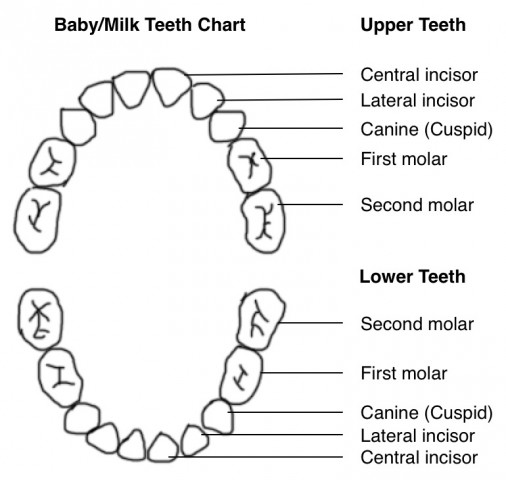
Photo: Michaeljung | Dreamstime.com
Making your kids aware of dental hygiene early in life and teaching them how to take care of their teeth is one of the biggest favors you can do them for the future. When healthy dental habits are inculcated early on, they are more likely to stick throughout the children’s lives. But at what stage should you start your child off with tooth brushing? And when should they make their first visit to the dentist to see if all is going well? Here are answers to those questions and more on dental care for kdis, as recommended by experts.
Brushing and flossing
During infancy, when your baby’s first teeth start to appear, carefully clean them with a soft, wet cloth. This will help get rid of small food remains and prepare them for learning how to brush up in the future. Do not use toothpaste containing fluoride (which most toothpastes have) for babies and toddlers under 2 years of age, unless a dentist or doctor specifically advises it (see the section on fluoride below).
While you will be cleaning their teeth when they are babies, when your children become toddlers give them their own baby brush and let them do it themselves. Two-year-olds can handle a small, soft toothbrush, which they should use in the morning and before bed. Be sure to teach your child the right way to clean her teeth (briefly, hold the brush at a 45° angle and make short back-and-front strokes) and that she should be working on them for at least two minutes.
Until age 6, a child shouldn’t use more than a pea-sized amount of toothpaste, and the parents need to stay with the child and supervise the brushing, reminding her not to swallow the toothpaste. Around 6 years children have better control over their swallowing reflex and are able to brush on their own.
As a final step, don’t forget to lightly brush the tongue to get rid of bacteria that cause cavities and bad breath, although if it causes the child to gag, wait a few weeks or months and then try again. Tongue cleaners or scrapers may also be used, though not on babies or small children.
Lastly, once your child has two teeth next to each other that touch, she needs to floss between them. Flossing is important to get rid of bacteria and food that is stuck between teeth, and to stimulate the gums. Try to get your kids into the habit by the time they are five years old. Flossing is a little more complicated than brushing and children under 5 may not be able to manage, so a parent may need to do it for them. It may help to set a good example by flossing regularly yourself, preferably together with your child.
Dental checkups
The Indian Dental Association (IDA) recommends taking a child to the dentist for the first visit no later than 12 months of age. This could vary depending up on the child and the state of the teeth: for example, if they are loose, crooked or come in very early or late. The IDA provides the following guidelines for teeth to come in (erupt):
 | Lower Teeth | Upper Teeth |
|---|---|---|
| Central incisors 6-10 months | Central incisors 8-12 months | |
| Lateral incisors 10-16 months | Lateral incisors 9-13 months | |
| First molars 14-28 months | First molars 13-19 months | |
| Canines 17-23 months | Canines 17-23 months | |
| Second molars 23-31 months | Second molars 25-33 months |
Starting at 12 months, the IDA recommends regular visits to the dentist every 6 months, or as needed, depending on the assessment of the child’s teeth. The sterility of the dentist’s clinic, the tools, noises and smells could be terrifying to some children so take a few moments to reassure your child. If the dentist has a special chair for children or some toys, that may help. It is better not use the dentist as a threat or means to coerce the child into brushing or other behaviours.
Fluoride
Fluoride is an essential part of tooth enamel, the hard outer part of the teeth. It is necessary during the development of the tooth below the gums and for maintenance after the tooth has come out, in children and in adults. However, too much fluoride during the development stage can lead to dental fluorosis, which is a permanent change in the enamel. In a mild form, dental fluorosis causes spots or streaks in the enamel that are only visible upon close examination. In a severe case of fluorosis, the teeth will be pitted and visibly stained. Although the main concern is aesthetic (the teeth will not look nice), a severe case also makes it difficult to clean the teeth well.
Share your thoughts, leave a comment below. Please like FamiLife’s page on Facebook so that you get all our articles and others may find us.
